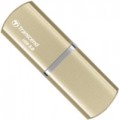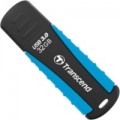Material
—
Plastic. Inexpensive and at the same time quite practical material. Plastic allows you to create cases of almost any shape and colour — from classic to very original; yet it is strong and reliable enough to protect the flash drive during normal household use and even in some adverse situations. At the same time, the strength and impact resistance of plastic are relatively low, and in case of serious "troubles" — falling from a great height, stepping on a flash drive, etc. — such a case with a high degree of probability will be damaged. However, such situations rarely occur, and there are quite a few varieties of plastic, some of them are very durable. Therefore, this material in modern flash drives is extremely popular.
—
Metal. Metal combines high strength and reliability with a stylish appearance; flash drives made of this material look solid and are able to withstand fairly strong impacts that would damage a plastic product. Such cases can be heavier than plastic, but this cannot be called a disadvantage: the weight of modern flash drives is not so large that it creates inconvenience, and the massiveness of the product enhances the impression of solidity. But of the unequivocal disadvantages of metal, one can name a higher cost than plastic.
—
Rubber. Rubber is quite easy to work with and is suitable for creating complex shaped cases; many flash driv
...es made from this material are of the original design. The main practical feature of rubber is elasticity. This makes the case quite shock-resistant and allows you to endure strong short-term pressure without consequences (for example, if you step on the product). At the same time, rubber is somewhat more expensive than plastic, and the advantages mentioned in most cases are not of key importance. Therefore, this material is much less common.
— Skin. Leather by itself is not suitable as a body material; therefore, in this case, we are usually talking about a leather covering on a solid base — metal or plastic. See above for more details on these materials; as for the skin, this material gives the flash drive a rich and solid appearance, but it is not cheap, and from a practical point of view it does not provide any special advantages. Therefore, cases with leather inserts are the prerogative of fashion models, for which not only functionality is important, but also an expensive representative design.
— Wood. From a practical point of view, wood has no advantages over plastic, while it is noticeably more expensive and more difficult to manufacture — in particular, because special processing is required for moisture resistance and strength. The advantage of this material can be called an attractive appearance; in addition, some users consider wooden cases to be the most "green" or pleasant to the touch. As a result, such cases are rare — only in designer models of "flash drives", created in order to stand out among plastic and metal products.Lanyard hole
A hole in the body of the flash drive that allows you to securely fasten the drive to the strap and wear it as a key fob. As a rule, the
eyelet for the strap is located on one of the ends of the flash drive body (on the side or in the center).
MIL-STD-810
Initially, this is a set of specifications that establishes certain levels of protection for electrical equipment from environmental factors. The standard was developed for testing military equipment for the US Army in order to maintain performance in various adverse conditions. It imposes quite stringent requirements on the test subjects: the level of product resistance to impacts during drops and shakes is checked, vibration tests are carried out, the device is tested in a wide temperature range, in rain, in fog, under the influence of sand, dust, etc. However, the
MIL-STD-810 label in "civilian" products does not always mean the highest degree of protection. This is due to the lack of strict regulation of the tests. So, the most ingenious vendors test the tested gadgets literally on one or two points of the programme from an extensive list and often deliberately do not cover which tests were passed. Accordingly, the specific features of such protection remain reliably unknown. The standard has been in force since 1962. Each new version of it is indicated by a letter of the Latin alphabet at the end. The further the letter down the alphabet, the more recent the version of the certificate. Since 2008, the MIL-STD-810G specification has been in force everywhere, and in 2019 a new edition of the MIL-STD-810H standard was approved.

